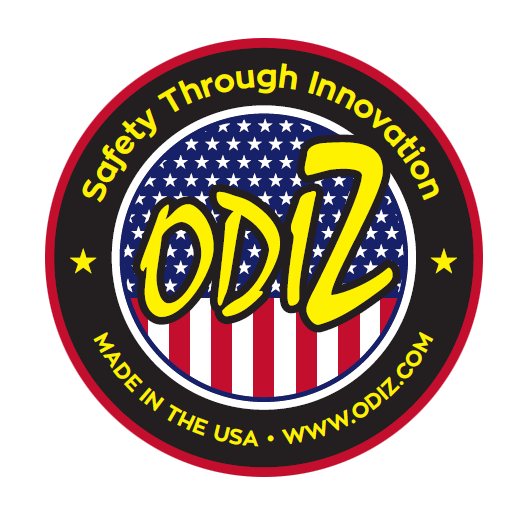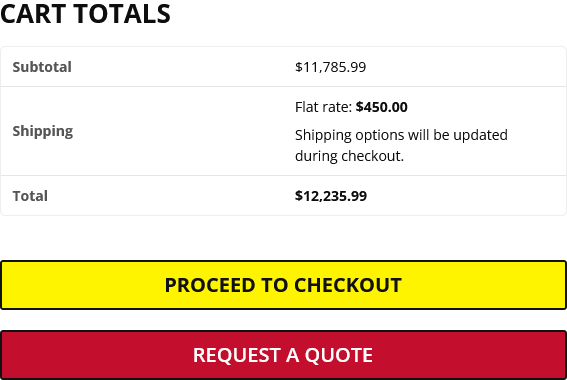OSHA Emergency Lighting Inspections
Contact us
Professional emergency lighting inspections and exit sign safety services. Ensure your emergency lighting meets 29 CFR 1910.37 & NFPA 101 standards with our digital inspection app.
Emergency lighting systems must be illuminated during power outages and provide adequate illumination for safe egress. Proper inspection and 90-minute testing are critical for life safety compliance.
To request more information about this product or service, please complete the form below. You can also chat live with one of our specialists via the widget in the bottom-right corner of your screen or call us at (574) 318-4333.
OSHA Emergency Lighting Regulations You Need to Know
Emergency lighting systems must provide adequate illumination during power outages to ensure safe egress. OSHA and NFPA standards under 29 CFR 1910.37 and NFPA 101 require regular emergency lighting inspections and 90-minute battery testing.
29 CFR 1910.37
Exit Route Standards
NFPA 101
Life Safety Code
NFPA 70 (NEC)
Electrical Installation
90 Minutes
Required Battery Duration
Common OSHA Emergency Lighting Violations
The most frequent compliance issues with emergency lighting systems that lead to OSHA citations and compromise life safety.
💡
Inadequate Illumination
Emergency lighting fails to provide minimum 1 foot-candle average illumination required by NFPA 101.
🔋
Battery Test Failures
Units fail to operate for required 90-minute duration during annual testing or show battery degradation.
🚫
Obstructed Exit Signs
Exit signs blocked by equipment, decorations, or storage preventing clear visibility during emergencies.
⚠️
Missing or Damaged Units
Emergency lighting units missing from required locations or damaged housing compromising functionality.
🔧
Improper Installation
Units not mounted securely or electrical connections not meeting NEC requirements for emergency circuits.
📋
Inadequate Testing Records
Missing monthly inspection records or annual 90-minute test documentation required by NFPA 101.
⚡
Transfer Switch Failures
Units fail to automatically transfer to battery power when AC power is interrupted during testing.
📝
Illegible Exit Signs
Exit sign letters not meeting 6-inch height requirement or stroke width specifications under §1910.37.
Why Emergency Lighting Inspections Matter
Emergency lighting systems are critical for life safety during power outages and emergencies. Regular emergency lighting inspections ensure systems function when needed most.
- Ensure safe egress during power outages and emergencies
- Prevent OSHA citations under §1910.37 and life safety violations
- Maintain compliance with NFPA 101 testing requirements
- Protect employees and visitors during emergency evacuations
- Provide documentation for insurance and liability protection
Regular inspections and 90-minute testing ensure emergency lighting systems provide reliable illumination when power fails.
SAFETY FIRST
OSHA & NFPA Standards
Emergency lighting requirements are established by OSHA and NFPA standards that mandate adequate illumination, proper installation, and regular testing.
29 CFR 1910.37(b)
Exit Routes Must Be Illuminated
Exit routes must be illuminated and emergency lighting must provide adequate illumination during power outages.
NFPA 101 (Ch. 7.9)
Emergency Lighting Requirements
Minimum 90-minute duration and illumination ≥1 foot-candle average for emergency lighting systems.
NFPA 70 (NEC)
Emergency Circuit Installation
Installation requirements for emergency lighting circuits and battery backup systems.
NFPA 70E
Electrical Safety Maintenance
Electrical safety in the workplace covering maintenance safety practices for emergency lighting.
The Smarter Way to Stay Compliant
Our OSHA Emergency Lighting Inspection App makes compliance fast, reliable, and audit-ready with comprehensive tracking and testing documentation.
📍
Complete Equipment Tracking
Tracks unit ID, manufacturer, model, battery type, and location for comprehensive emergency lighting inventory.
📋
Monthly Inspection Records
Documents monthly visual inspections and 30-second battery tests as required by NFPA 101.
⏱️
90-Minute Testing Management
Schedules and documents annual 90-minute battery duration tests to ensure NFPA 101 compliance.
🚨
Automatic Failure Detection
Flags units with battery failures, transfer switch problems, or inadequate illumination for immediate attention.
📊
Audit-Ready Documentation
Provides inspection history, test results, and digital records for OSHA audits and life safety compliance.
🔧
Maintenance Scheduling
Tracks battery replacement schedules and maintenance intervals to prevent system failures.
Make emergency lighting compliance systematic, reliable, and fully compliant with OSHA and NFPA life safety standards.
Stay Ahead of OSHA Citations
Slings are some of the most closely inspected rigging components on any jobsite. With our digital inspection solution, you can ensure complete compliance and safety.
Life Safety Compliant
Meet OSHA and NFPA 101 requirements
Eliminate Test Failures
Never miss 90-minute battery tests
Complete Records
Maintain inspection and test documentation
Emergency Ready
Ensure systems work when needed
Emergency Lighting Compliance FAQs
Common questions about OSHA emergency lighting inspections, exit sign requirements, and NFPA 101 compliance standards.
How often must emergency lighting be tested?
NFPA 101 requires monthly 30-second tests and annual 90-minute duration tests. Monthly tests verify transfer to battery power, while annual tests ensure full battery capacity for emergency egress.
What illumination level is required for emergency lighting?
NFPA 101 requires minimum 1 foot-candle average illumination along egress paths, with no point less than 0.1 foot-candle. This ensures adequate visibility during emergency evacuations.
How long must emergency lighting operate during power outages?
Emergency lighting must operate for minimum 90 minutes according to NFPA 101. This provides sufficient time for safe evacuation and emergency response activities.
What are the exit sign requirements under OSHA?
Exit signs must have letters at least 6 inches high with ¾-inch stroke width per §1910.37(b)(7). Signs must be illuminated and clearly visible from all directions of approach.
Who can perform emergency lighting inspections?
Inspections can be performed by qualified maintenance personnel familiar with emergency lighting systems. However, annual testing and major repairs should involve qualified electrical contractors.
What documentation is required for emergency lighting?
NFPA 101 requires records of monthly inspections and annual tests. Documentation must include test dates, results, deficiencies found, and corrective actions taken.


